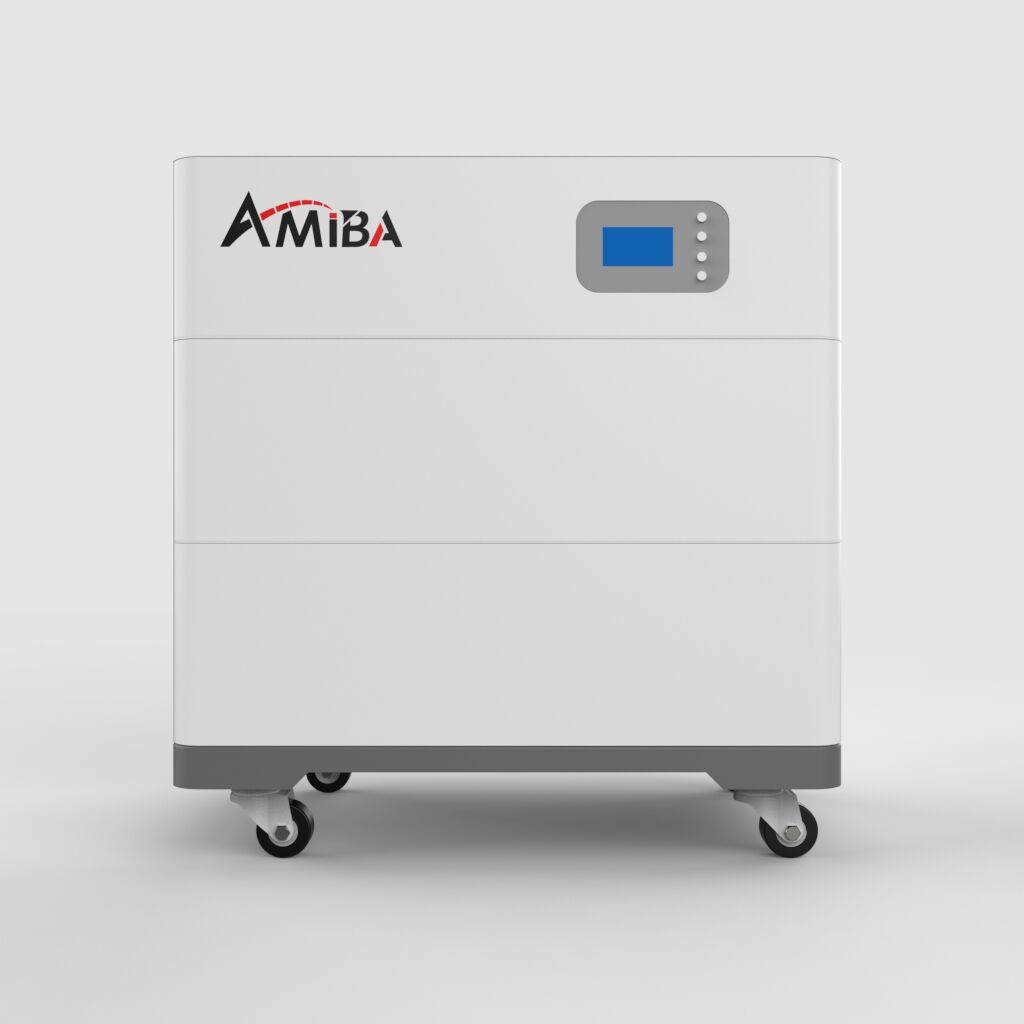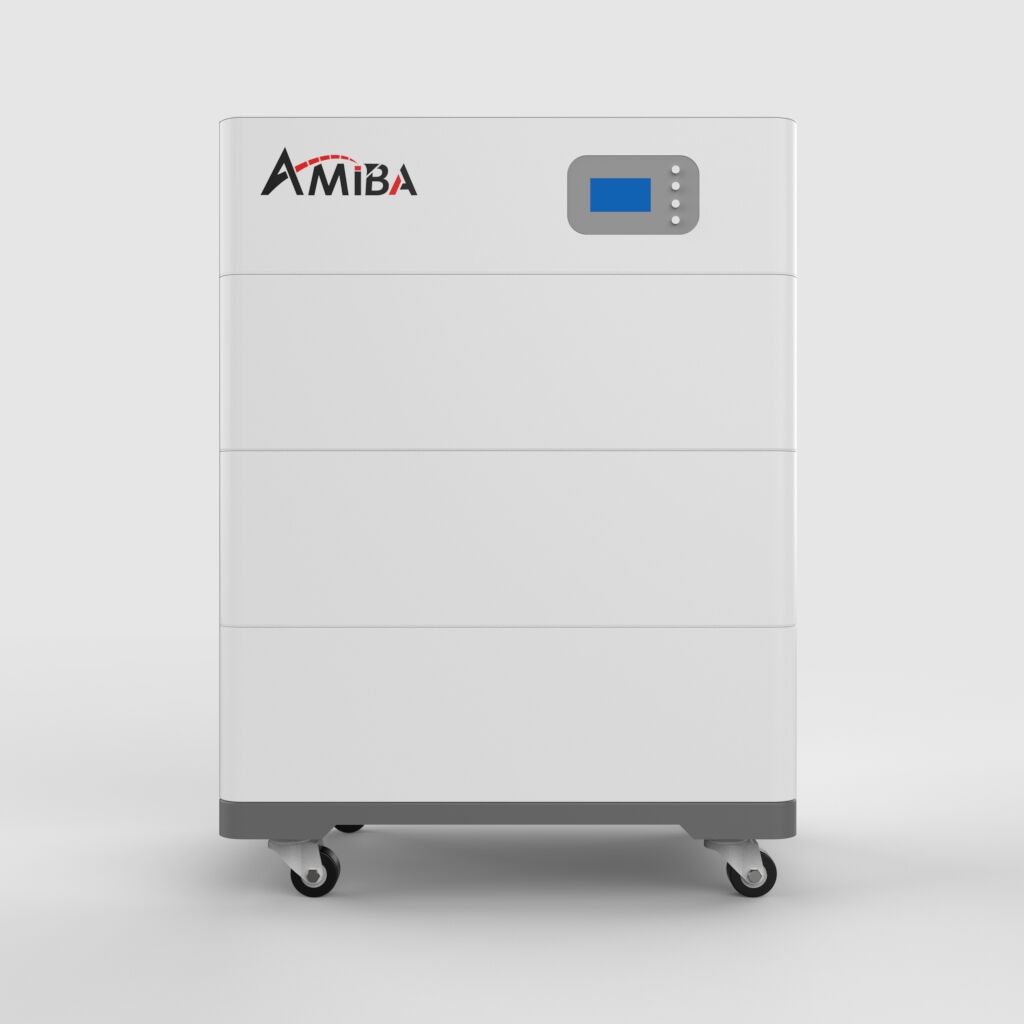The Stacking Battery models AN05X and HES05X offer 5KW power output along with 5KWh energy storage capacity, all packed into a compact unit suitable for most homes. Designed with modularity in mind, these batteries fit right into existing electrical setups without requiring major rewiring or structural modifications around the house. For homeowners looking to cut down on electricity bills, this system makes managing household power much simpler. By storing excess energy when rates are low and using it during peak hours, many people actually spend less money overall on their monthly utility expenses. Some early adopters saw their yearly energy costs drop by nearly a third after installing similar battery systems, which shows just how impactful these technologies can be for regular households wanting to save both money and resources.

Mid-sized companies looking to cut down on energy bills might want to check out the Stacking Battery AN05X paired with the HES10X model. This setup comes with 10 kilowatt hours of storage capacity and delivers 5 kilowatts of power output, which works well for businesses with average energy needs throughout the day. When companies install these battery systems, they gain access to smart strategies like peak shaving where they avoid drawing power when rates are highest, plus load shifting that moves energy usage to off-peak times. Some local manufacturers actually saw their monthly electric bills drop around 15 percent once they got similar setups running. Plus, using stored energy during those busy afternoon hours takes pressure off the electrical grid at its most stressed moments. For business owners concerned about both bottom line savings and environmental impact, this kind of system represents a win-win situation that doesn't sacrifice daily operations for green credentials.

The Stacking Battery models AN05X and HES15X-5KW with their 15KWh capacity are built specifically for industrial applications needing serious energy storage solutions. These batteries become absolutely necessary when businesses simply cannot afford any power interruptions at all. Manufacturing plants, data centers, and other facilities rely on them to keep running even when the grid goes down unexpectedly. Factories that install these systems report being able to continue production without missing a beat because the batteries act as safety nets during those random power hiccups we all know happen from time to time. Industry statistics suggest that companies with good backup power arrangements see around a 40% drop in lost productivity due to outages, though results vary depending on location and infrastructure quality. What matters most is how these batteries actually help real businesses stay operational when something goes wrong with their main electricity supply.

Going modular when setting up off grid solar systems gives much better flexibility and lets people customize things according to their specific situation, which makes these systems work well in all sorts of places from remote villages to mountain cabins. The modular design means folks can build exactly what they need now and then just add on later as their energy needs grow or change. What's great about this is it creates personalized solutions while still getting good performance out of the whole system no matter how it gets used. Research into renewables has shown that going modular actually cuts down initial costs quite a bit and boosts efficiency too because parts can be swapped out or upgraded individually instead of tearing everything apart and starting fresh. Because of this adaptability, modular setups handle shifting energy demands and tricky terrain much better than traditional monolithic installations, making solar power storage options both greener and more practical for communities around the world.
When it comes to making homes more energy efficient, hybrid storage systems stand out as something really special. They mix solar batteries with regular power sources, giving homeowners two benefits at once. On sunny days they can use clean solar power, and when the sun isn't shining or there's extra demand, they still have that dependable backup from traditional sources. Take a typical setup for instance: many people pair their rooftop solar panels with either the main electrical grid or maybe even a backup generator. This lets families manage how much energy they actually consume throughout the day. Looking at real world examples, some households have seen their monthly bills drop dramatically because these hybrid setups maximize what comes from solar panels while reducing dependence on outside power companies. Beyond saving money though, there's another big plus worth mentioning too. By relying less on fossil fuels, these systems help cut down greenhouse gas emissions without sacrificing reliability. That combination of cost savings and environmental benefits explains why so many forward thinking homeowners are turning to hybrid solutions for their energy needs today.
Homeowners who install modular battery systems get much more control over how they manage their electricity usage throughout the day. With these setups, people can actually tweak when and how much power gets used depending on what's going on at home, which helps maximize the backup capacity of those batteries. When energy prices spike during peak hours, this kind of system lets folks shift some loads around so they don't end up paying through the nose. Consumer studies keep showing that households with these systems tend to waste less power overall because leftover solar energy gets stored properly instead of just being lost. Industry experts have been talking about this for years now, pointing out how adaptable these modular designs are while still saving money long term as our overall energy demands continue climbing.
Modular battery systems offer real money savings because they grow along with changing energy requirements. A homeowner doesn't need to spend big bucks all at once on an energy storage system. Instead, they can add modules over time as their electricity needs increase. The beauty of this approach is it meets today's power demands while preparing for what comes next, which makes sense financially. Looking at the numbers shows that scaling up modular systems costs less than buying a full sized traditional setup right from the start. Most people find this flexibility helpful since it avoids huge initial expenses. Energy analysts keep pointing out that these modular options help cut down waste in power consumption too. As more homes adopt renewable sources like solar panels, we'll probably see these scalable systems becoming standard solutions for managing household energy going forward.
AI is becoming really important for making home energy storage systems work better. These smart systems use AI algorithms to respond to changes in demand throughout the day, which makes them run more efficiently and saves homeowners money on their bills. The predictive maintenance aspect of AI is especially cool because it catches problems early before they cause major headaches. According to research from the International Energy Agency, we're looking at some serious growth in this area too. They estimate the market for AI-based energy management could grow about 16% each year for the next ten years. What does this mean? Well, it looks like AI will continue transforming how we store and manage energy at home, helping us move closer to those long-standing goals of cheaper power options without harming the environment so much.
Going green has moved from buzzword status to business necessity across industrial sectors dealing with energy deployment. Energy storage plays a big role here since it helps manage power consumption better while cutting down on environmental damage. Companies face pressure from regulations and growing consumer expectations to switch to renewables, which explains why we're seeing demand for storage tech like CES's SuperPack that cuts carbon emissions significantly. The EPA actually estimates that businesses implementing full-scale sustainability measures can slash their carbon output around 25 percent. What this really means is that manufacturers who invest in these technologies aren't just doing their part for the planet but also improving bottom lines through smarter energy management in day-to-day operations.